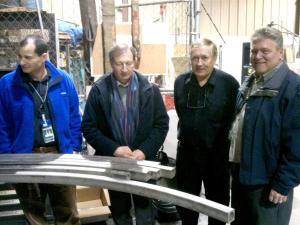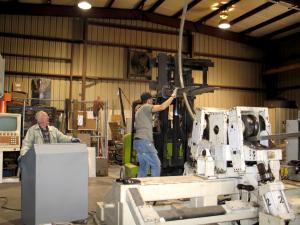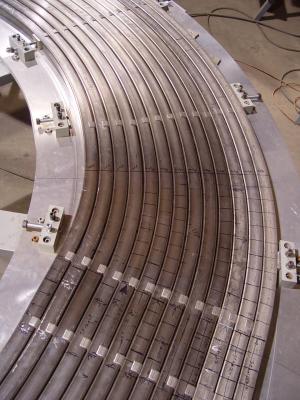Trial time for central solenoid
In October 2010, the US-DA launched a call for tender to select a coil manufacturer, and the contract with industry is expected to be placed in spring 2011. In advance of manufacture, R&D actions are currently underway to address some of the more critical areas of this technically-challenging fabrication process (see below).
Further trials are planned on the shaping of the conductor in the area where a sharp bend occurs as the conductor exits the winding-pack to reach the terminals. Preliminary trials have shown that bending the cable on a radius as small as 100 mm is achievable without too much deformation.
The ITER central solenoid is split into six coils called modules, stacked one on top of the other and inserted into the free space in the middle of the torus that is formed by the toroidal field magnets. In order to maximize the total flux available to generate and sustain the plasma current, the number of turns (553) in each central solenoid coil is designed to be as large as possible. At the same time, the maximum magnetic field on the conductor must remain within the 13 T limit, providing enough margin for the Nb3Sn conductor operating at 4.5 K. The inner radius of one central solenoid module is 1.3 m, its outer radius 2.1 m and its height 2.15 m. The conductor is a cable-in-conduit conductor, with a square outer cross-section of 49 mm x 49 mm and an inner circular cable diameter of 32.6 mm. As the unit length of such a conductor will not exceed 918 m, it will be necessary to wind six unit lengths of 918 m and one unit length of 613 m for each module and to connect them with joints in order to reach the 6.1 km needed for 553 turns. The accurate winding of such a thick conductor into multiple pancakes with 14 turns each is indeed a serious challenge that has not yet been demonstrated; at the time of the central solenoid model coil program, layer winding, and not pancake winding, was used.




